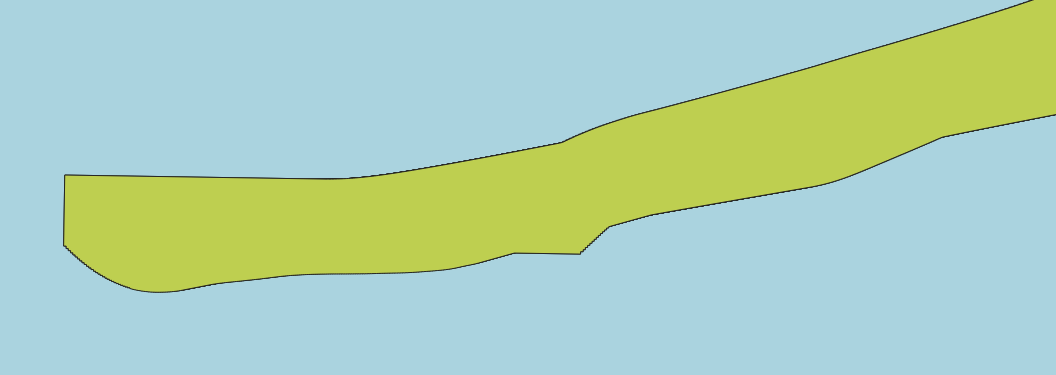I'm trying to generate a swept path for a ship, our simulator can export lat/long and heading coordinates(and more).
In QGIS I did something with the Rectangles, Ovals and Diamonds tool which lets me draw a shape the height and width I need at each point and apply a heading...the issue is a ship isn't quite any of those shapes.
I was thinking I could create an SVG the shape of the ship but is there a tool that would let me place them as the vertex points and rotate them? Or can I somehow convert the outlines to a polygon if I used them as symbols? I also have ArcGIS Pro by the way which is an option as well.
----------------Updated 5/3/2024----------------------------
Here's an example of what I'm trying to get...this is from the Rectangles, Ovals and Diamonds tool...unfortunately the ship tappers in the front creating distortions in the shape. I can then however take this shape and dissolve it into a single polygon.
I was thinking I could use an SVG symbol to do something similar with the original veticies but I'd still need to convert the entire outline of all those symbols into a single polygon in the end.
I did find a tool as well called Create Line of Bearing which will create a line of a given length at each vertex with the heading attribute for the rotation...I can create a second line at the heading attribute+180 to to get the other side...if I could create a specific set of cross section lines which would vary in length to match that of the ship I'd be in business as well.


